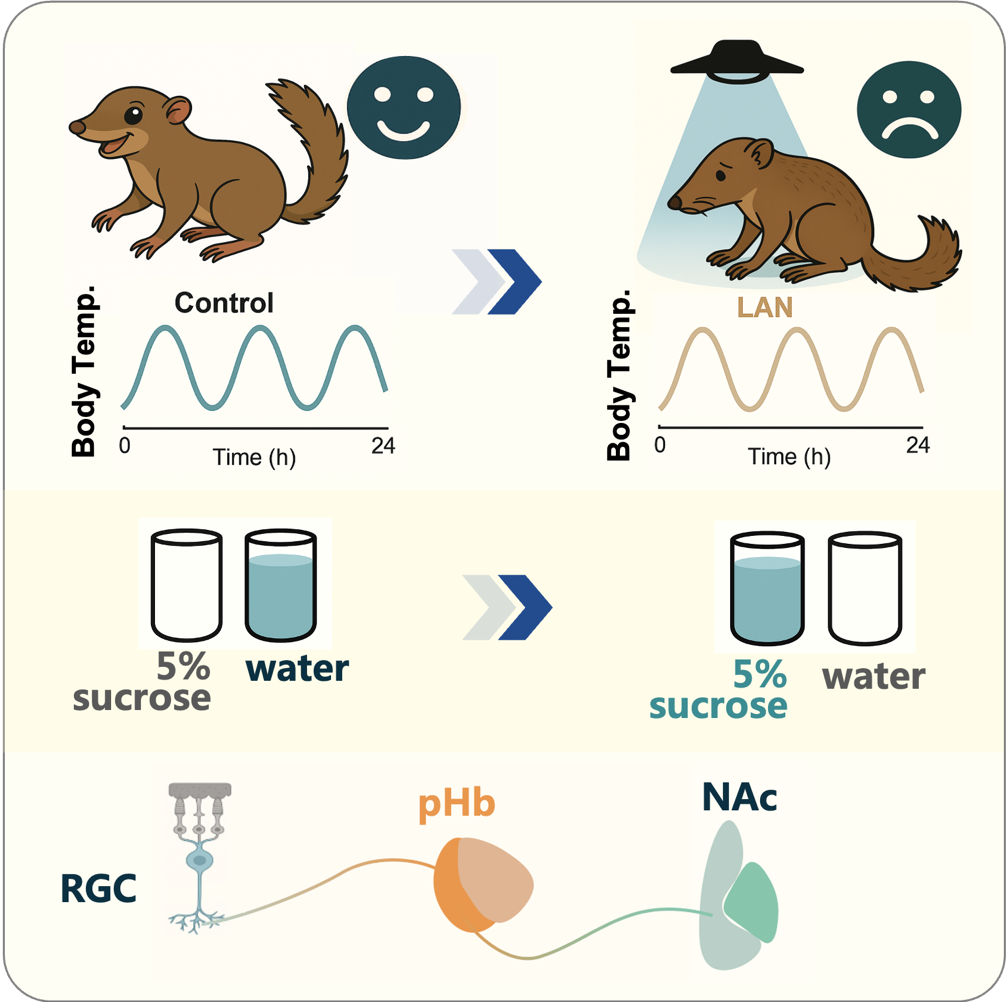A new study published in PNAS reveals that chronic exposure to artificial light at night (LAN) can trigger depression-like behaviors by activating a specific neural pathway in the brain.
The study, conducted on tree shrews- diurnal mammals genetically close to primates that are active during the day like humans-offers critical insights into how nighttime light may disrupt mood regulation, potentially affecting human mental health in increasingly illuminated urban environments.
The research team, led by Prof. XUE Tian from the University of Science and Technology of China (USTC), Prof. YAO Yonggang of the Kunming Institute of Zoology of the Chinese Academy of Sciences (CAS), and Prof. ZHAO Huan of Hefei University, exposed tree shrews to blue light (comparable to bright indoor lighting) for two hours each night for three weeks. Following this exposure, the animals exhibited clear depression-like symptoms, including a 20% reduction in sucrose preference (a marker of anhedonia), diminished exploratory behavior, and deficits in long-term memory.
Using advanced neural tracing techniques, the researchers identified a previously uncharted visual circuit. Specialized retinal ganglion cells were found to send signals directly to the perihabenular nucleus (pHb), which in turn projects to the nucleus accumbens-a key center in the brain for mood regulation.
Notably, when the pHb neurons were chemically silenced, the tree shrews no longer developed depression-like behaviors in response to LAN exposure. Further analysis through RNA sequencing revealed that these changes corresponded to altered activity in depression-related genes, suggesting potential long-term effects.
As light pollution and screen exposure become ever more pervasive in modern life, the study raises important questions about the cost of artificial illumination on psychological well-being and the implications for modern lifestyles.
"These findings give us both a warning and a roadmap," said Prof. YAO Yonggang. "The same light that enables our nighttime productivity may be subtly reshaping brain circuits underlying mood, but now we know where to look for solutions."
The discovery opens new avenues for targeted interventions that could mitigate the psychological impacts of artificial light while preserving its societal benefits.

LAN exert depression-inducing effects in tree shrews via a pHb-related visual pathway. ( Image by MENG Jianjun)






